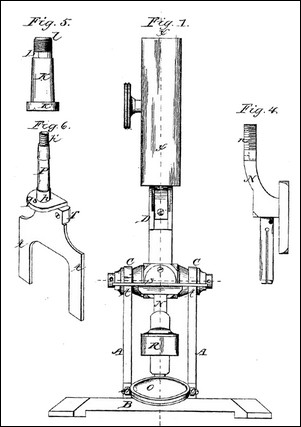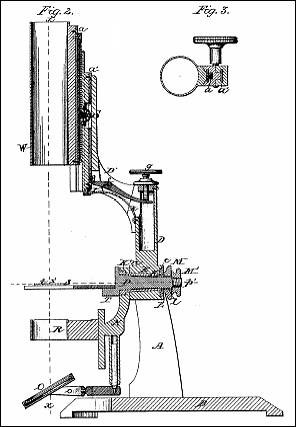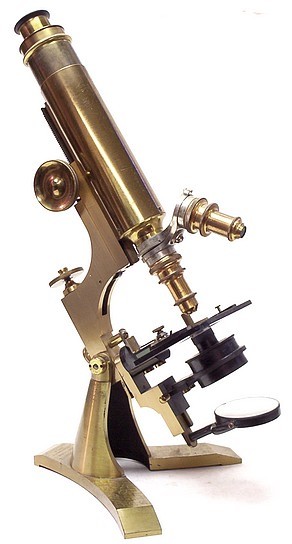
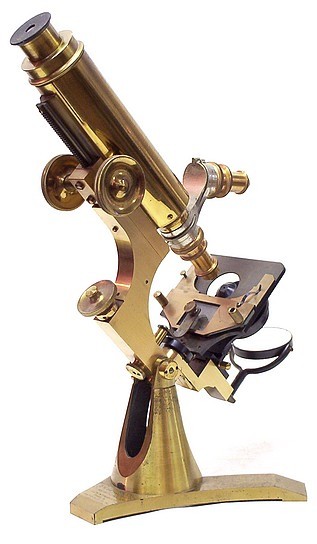
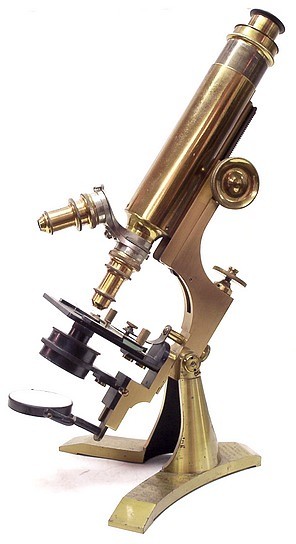
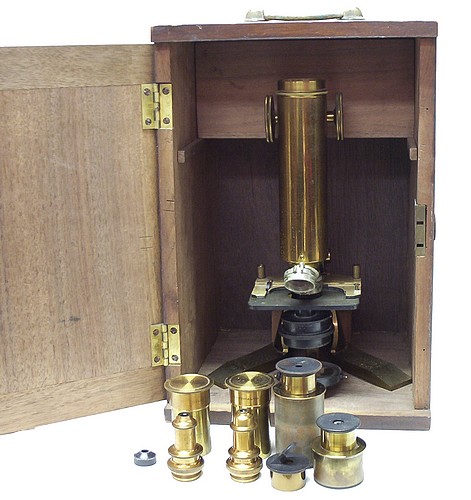
The following was extracted from the 1895 Zentmayer Catalog of Microscopes, Mechanical Accessories, and Optical Apparatus ( Fiftheeth Edition)
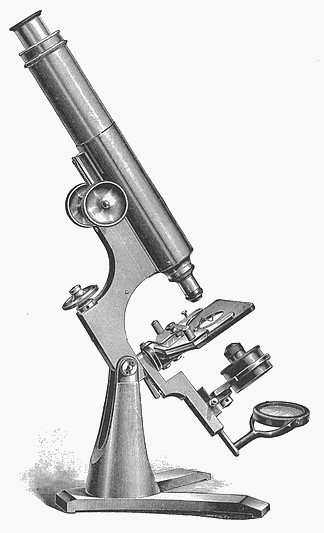
AMERICAN COLUMBIAN STAND.
This, formerly known as the Histological Stand, found favor from the first among practical microscopists. It was reconstructed with many improvements in time for the World's Columbian Exposition at Chicago, but circumstances prevented exhibition there. It is highly recommended as compact, convenient, and competent for any work required all modern microscopy.
The entire stand is of brass, highly finished, and is twelve inches high when in perpendicular position, with draw-tube closed, giving the short standard (Continental) length. The body may be extended to the long standard (English and American) length. Most workers, while possessed of only one stand, have several objectives made by different manufacturers and adjusted for different lengths of the optical body, consequently the advantage of obtaining either extreme standard and any between with the same instrument becomes a real necessity. The base and supporting pillar, in one piece, is original in design and execution. The tripod upholds a hollow divided cone, the sides forming two parallel pillars of peculiar shape which support the bar between them by a movable joint at the apex of the cone. Such construction gives the greatest structural rigidity with the least dead weight, producing perfect stability and easy portability, as well as pleasant outlines. The joint permits all degrees of inclination from the perpendicular to the horizontal. This tripod base offers practically all the advantages of the horseshoe form of foot for upright work, and is far superior for inclined and horizontal positions. The coarse and fine adjustments are of the same style and construction as previously described. The sub-stage and mirrors swing in like manner; the former, affixed by a capstan set screw on a sliding bracket, is adjusted by milled knobs on each side, and the latter by a lengthening bar. The stage is nearly square, of ample proportions and so placed that the object is in the same position as on the larger stands; it has a similar carrier, and is attached to its bracket by set screws.
A round revolving stage, similar to the one shown
on the preceding Stand, can be furnished instead at an additional
cost of $12.00.
